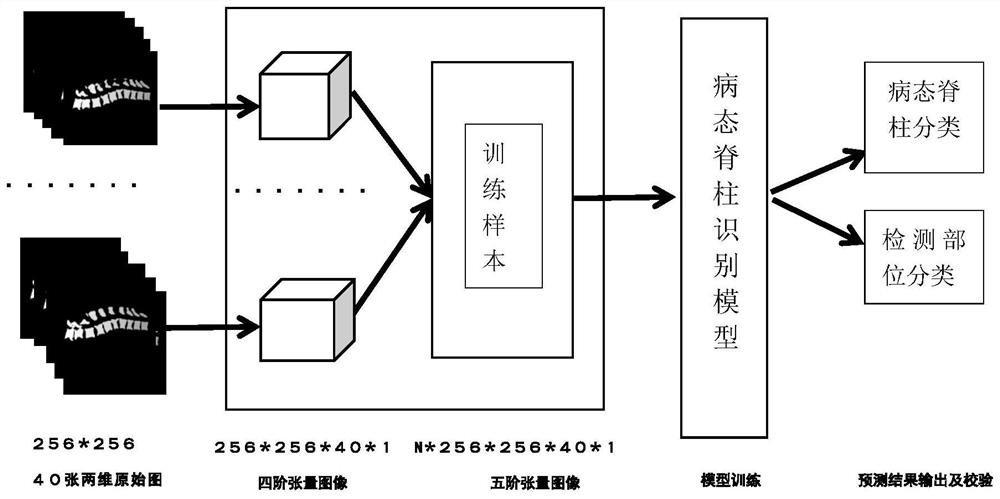Spine CT image recognition method based on multi-dimensional residual network
A CT image and recognition method technology, applied in medical images, neural learning methods, character and pattern recognition, etc., can solve the problems of high error rate, loss of spatial information, and inability to train in large batches, etc., to achieve comprehensive and more accurate recognition, The effect of preserving spatial information
- Summary
- Abstract
- Description
- Claims
- Application Information
AI Technical Summary
Problems solved by technology
Method used
Image
Examples
Embodiment Construction
[0022] In order to further understand the invention content, characteristics and effects of the present invention, the following embodiments are enumerated hereby, and detailed descriptions are as follows in conjunction with the accompanying drawings:
[0023] See figure 1 , a spinal CT image recognition method based on a multidimensional residual network, establishes a diseased spine recognition model based on a multidimensional residual neural network; sets labels for training samples and performs dimensionality enhancement processing, so that its dimensions match the multidimensional residual neural network ; use the processed training samples to train the pathological spine recognition model; then upgrade the spine CT image to be recognized so that its dimension matches the multidimensional residual neural network; output recognition features from the pathological spine recognition model.
[0024] The multi-dimensional residual neural network can adopt the residual neural ...
PUM
 Login to View More
Login to View More Abstract
Description
Claims
Application Information
 Login to View More
Login to View More - R&D
- Intellectual Property
- Life Sciences
- Materials
- Tech Scout
- Unparalleled Data Quality
- Higher Quality Content
- 60% Fewer Hallucinations
Browse by: Latest US Patents, China's latest patents, Technical Efficacy Thesaurus, Application Domain, Technology Topic, Popular Technical Reports.
© 2025 PatSnap. All rights reserved.Legal|Privacy policy|Modern Slavery Act Transparency Statement|Sitemap|About US| Contact US: help@patsnap.com



